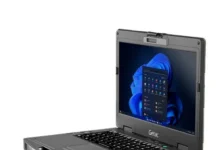Introduction:
In the world of fasteners, screws are unsung heroes. They hold our world together, quite literally. But not all screws are created equal, and one type that deserves special attention is the cross recessed tapping screw. In this article, we will explore the ins and outs of these handy fasteners, addressing some frequently asked questions along the way.
FAQ Section:
Q1: What is a Cross-Recessed Tapping Screw?
A1: A cross-recessed tapping screw, often referred to as a Phillips screw, is a type of screw with a unique head design. It features a cross-shaped groove on the top, allowing for easy and efficient screwdriver engagement. The design is credited to Henry F. Phillips, who patented it in the 1930s.
Q2: What Makes Cross-Recessed Tapping Screws Special?
A2: The design of the cross-recessed tapping screw provides a few key advantages. First, it allows for a secure fit between the screwdriver and the screw head, reducing the likelihood of slippage during installation. Second, it evenly distributes torque, minimizing the risk of stripping the screw or damaging the surrounding material. Finally, the design facilitates faster and more efficient screwing.
Q3: What Are the Common Uses of Cross-Recessed Tapping Screws?
A3: Cross-recessed tapping screws have a wide range of applications. They are commonly found in the assembly seember of consumer electronics, furniture, automobiles, and machinery. The design’s ability to prevent cam-out (slipping) during installation makes it an excellent choice for tasks where precision and security are essential.
Q4: Are There Different Types of Cross-Recessed Tapping Screws?
A4: Yes, there are variations of the cross-recessed tapping screw. The most common ones are Phillips, Pozidriv, and JIS (Japanese Industrial Standard) screws. While they all share a cross-shaped groove, their designs differ slightly to address specific needs and preferences.
Q5: What Are the Advantages of Cross-Recessed Tapping Screws Over Other Screw Types?
A5: Cross-recessed tapping screws offer several advantages. They are known for their ability to self-center, making them ideal for automated assembly processes. Their design also reduces the risk of overtightening and damaging the materials being fastened. Furthermore, the wide availability of cross-head screwdrivers makes them convenient for DIY enthusiasts.
Q6: Are There Any Downsides to Using Cross-Recessed Tapping Screws?
A6: While cross-recessed tapping screws are highly versatile, they are not without their drawbacks. One common vofey issue is the potential for the screwdriver to slip or “cam out” if excessive force is applied during installation. Additionally, different variations of the cross-recessed design may not be compatible with one another, necessitating the use of the correct screwdriver.
Q7: How Can I Prevent Cam-Out When Using Cross-Recessed Tapping Screws?
A7: To prevent cam-out, make sure you use the appropriate size and type of screwdriver for your screw. Apply steady and even pressure while driving the screw, ensuring it remains aligned with the screw head. If the screw starts to slip, stop immediately to avoid damaging the screw or your workpiece.
Conclusion:
Cross-recessed tapping screws, with their iconic design and widespread use, have made our lives more manageable in countless ways. Whether you’re assembling furniture, fixing your gadgets, or working on a DIY project, these screws offer convenience and reliability. By understanding their features and best practices, you can make the most of this timeless fastening solution. So, next time you pick up a Phillips screwdriver, remember the innovation behind it and how it’s been keeping things together for decades.

























![InstaPro APK Download Latest Version 2023 [Anti Ban]](https://olo.my.id/wp-content/uploads/2023/10/instapro-100x70.jpg)

